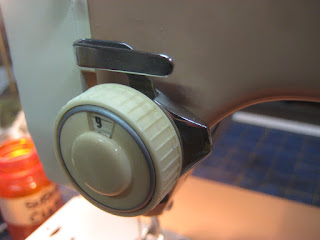My latest find is the Lelia 513.
A very nice condition girl that was nearly completely locked up.
It took a while to free up the main works and a lot of time to free up the ZZ pivots. I found references to the needle pivot being commonly frozen; this one was Super frozen.
Got the manual and accessories too but sadly had to remove from the cabinet and so have no case for it.
Lelia is one of the supreme examples of fine manufacturing of the mid 20 cent. All parts are painted separately and assembled with care to avoid paint chipping.
The reputation for precision is very evident here and is sited as the root cause for the freezing up issue. In the early days of plastics (60s-70s) the freezing (think Viking horrors) are a different type of cause.
So frozen ZZ, very stiff crank shaft was not all. One thing they did not do well was making a solid provision for oiling the motor bearings, if you have one of these machines with the original motor you should consider getting a drop of oil at the two ends. I believe this was a considerable problem for this machine and will cause slow sewing, low power, and replacing the bearing is not going to be easy.
Note the plastic buffer between the body casting and the motor mount keeps the paint from scratching. and the little piece of felt to isolate the motor mount from the casting too.
This machine had a really hard time starting up and would get a little slower as it heated up.
The only way to get to the bearing is to open up the motor but definitely do NOT do this unless you must.
I always pull the commutators out file them down, blow it out, and reassemble once I get this far.
I pulled the front cover off (the part I don't recommend doing) because the shaft seemed loose, only then did I see that the front bearing was bone dry.
Got a little oil on it and reassembled it; it's working much better now.
I found that the hand wheel was very tight to the main casting and so I gave it 0.003" clearance with a feeler gauge: I think this helped.
Lastley went ahead and cleaned every tooth on the thumb wheels because it deserved it!
I think this machine will make it to 100 years old.






















































